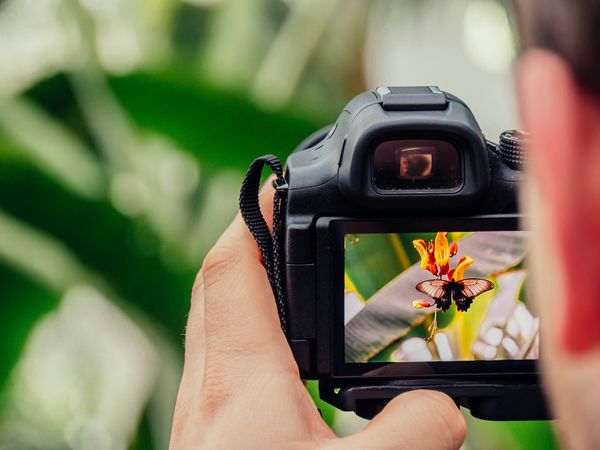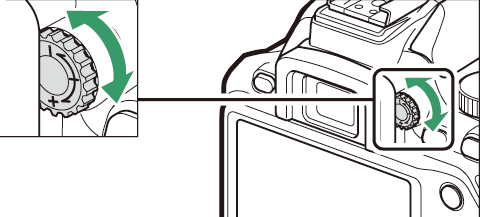Eye Protection Tips for Professional Photographers
Introduction
More than four billion people wear glasses globally, making vision impairment a worldwide concern. Studies have shown that poor vision can lead to reduced mobility and activity, as well as an increased risk of falls and injuries. Vision issues can also have a huge impact on daily life and work, particularly in such visual fields as photography.

For professional photographers, good vision is as indispensable a tool as a good camera. Preserving and protecting vision health is crucial for photographers' careers, as it's the foundation for setting up a good shot. Luckily, there are practical ways for photographers to work around vision issues, from choosing the proper eyewear and lenses to learning how to adjust your camera.
Tips
Here's a closer look at some vision protection and management tips for professional photographers below:
Get glasses that fit correctly
Good eyesight is crucial for photography, so vision correction aids such as glasses are a necessity for many photographers. However, glasses can also make looking through the viewfinder difficult, and even glasses cords or holders can still get caught on your equipment while maneuvering around, which can sometimes lead to injuries or damage to your camera. Additionally, ill-fitting glasses are more likely to bump against the camera or fall off during a shoot.
To minimize discomfort when you shoot while wearing spectacles, look for eyeglasses that perfectly fit your face. When looking for glasses online, choose a retailer that allows you to filter your search for fit, including frame sizes, adjustable nose pads, and frames for lower nose bridges. The right fit can make taking photos with your glasses on much easier and also ensures that you aren't forced to pick between vision correction and comfort.
Choose the right lenses
Besides wearing properly fitted glasses, professional photographers should also choose the right lenses for them. Polarizers like the Hoya HD3 for your camera lenses are used to reduce haze and reflection and ensure increased saturation for better image quality, especially in nature photos. But while the same principle works for polarized lenses for glasses and sunglasses, such lenses might be more of a hindrance than a help. For instance, while polarized eyewear lenses can help reduce glare and discomfort, they also affect how you see color and contrast on your camera's EVF and LCD – which is crucial when framing high-quality photographs.
EDITOR NOTE: The rear screen of all digital cameras to date is an LCD which uses a polarizing layer internally. When looking at it through polarized glasses, the image will become very faint in either vertical or horizontal orientation, depending on the camera model, when the direction of the internal polarizing film is at 90° from the one on your eyewear.
Instead of opting for polarized glasses or sunglasses, go for glasses with specialized bifocal lenses to help you shoot better. These lenses correct distance vision during close work, allowing you to scout distant subjects better and analyze photos more efficiently without eye strain or discomfort.
Prioritize UV protection
Wearing eye protection while taking photos outside can help protect your vision from UV rays, which can cause photokeratitis or even cataracts in the long run. Sunglasses can prevent UV rays from penetrating your eyes, but you may have to take them on and off depending on how you're shooting.

If sunglasses aren't the right option for you, you can also try wearing a sun hats from brands like Einskey, which are lightweight and easy to pack, with wide brims that can protect your face and eyes from sun exposure during outdoor photo sessions. There's a wide variety of sun hat suitable for photographers, so make sure to find the hat that best fits your size, needs, and climate.
EDITOR NOTE Photographers still using a DSLR or SLR are still exposed to UV rays when looking through the optical viewfinder, unless a UV Filter is attached to the lens itself. Otherwise, UV filters on camera lenses are not required for digital photography.
Adjust your diopter accordingly
If you prefer not to wear glasses or sunglasses while taking photos, you can also adjust your camera's viewfinder to match your natural eyesight which reduces eye strain and headaches. This ensures that what you see through the viewfinder is clear, eliminating the hassle of wearing glasses that get in the way viewing the entire viewfinder and to better determine what is in focus. You can do this by locating the diopter adjustment control – usually a small circular dial – then looking through the viewfinder before half-pressing the shutter button to activate the data display within the viewfinder, and then adjusting the diopter control until the display in the viewfinder is sharp enough for you.

Ocular health and comfort are crucial for photographers, but managing your vision needs along with your equipment isn't always easy. To preserve and protect your vision, follow these practical tips the next time you head out to on your next shoot.
Please Support Neocamera
All information on Neocamera is provided free of charge yet running this website is a huge endeavor. Purchases made via affiliate links found throughout the site help keep it running and up-to-date. There is no additional cost to you, so please consider buying via these links to our affilates:
Thank you for your support!
Updates
2025.11.13

Best Gifts for Photographers in 2025 by Budget
The annual Neocamera Photography Gift Guide updated to 2025. Find great gifts for photographers with any price budget.
2025.07.07

Stellar Photo Recovery Review
Review of Stellar Photo Recovery V12. This Windows and MacOS software can recover photos and videos in a huge number of formats from memory cards, USB drives, SSDs and HHDs.
2025.05.14

Huion Kamvas 13 Gen 3 Review
In-Depth review of the Huion Kamvas 13 Gen 3 Pen Display Tablet for photographers and graphic artists.
2025.01.18

Fujifilm GFX 2025 Lens Roundup
Lens Review roundup of Fujifilm GFX Medium-Format lenses. Quality, performance and handling of the GF20-35mm F/4R WR, GF30mm F/3.5 Tilt-Shift and the GF55mm F/1.7.
2024.11.18

Best 2024 Photography Gifts for Every Budget
Great gifts for photographers and photo enthusiasts selected for every budget among the best products of 2024.
2024.08.07

Eye Protection Tips for Professional Photographers
The four main considerations for professional photographers regarding eyewear.
2024.07.14

Fujifilm X100VI Review
Flagship fixed-lens compact digital camera with a 40 MP sensor and Image-Stabilization, a first for the series. Retro design featuring dual control-dials, plus direct ISO, Shutter-Speed and EC dials. Its hybrid viewfinder can switch between EVF and OVF mode.
2024.05.09

Fujifilm GFX100 II Review
Flagship 102 Megapixels Medium-Format Mirrorless Digital Camera with 8-Stop 5-Axis IBIS, 8 FPS Drive, 8K Video and 400 MP Super-Resolution capture in a weatherproof and freezeproof body with dual control-dials and dual memory-card slots.
2024.04.03

Fujifilm X-T5 Review
Newest Fujifilm flagship boasting a 40 MP APS-C sensor, 5-axis IBIS with 7-stop efficiency, 15 FPS continuous drive, 6.2K Video capture, dual control-dials and dual SDXC UHS-II slots in a sturdy weatherproof and freezeproof body.
2023.11.20

Best Digital Cameras of 2023
Find out which are the Best Digital Cameras of 2023. All the new Mirrorless Digital Cameras from entry-level to high-end professional.
2023.07.10

Fujifilm X-H2 Review
40 Megapixels APS-C Hybrid Mirrorless Digital Camera with 7-stop IBIS. Fastest shutter ever and 8K video capture. Large builtin EVF with 0.8X magnification and 5.8 MP, plus an Eye-Start Sensor. Packed with features and large number of controls in a weatherproof and freezeproof body.
2023.05.07

Sony FE 20-70mm F/4G Review
Review of the unique Sony FE 20-70mm F/4G lens. The optical zoom of this lens spans ultra-wide-angle and medium focal-length coverage, making it one of the most versatile Full-Frame lenses on the market.
2025.11.13
2025.07.07
2025.05.14
2025.01.18
2024.11.18
2024.08.07
2024.07.14
2024.05.09
2024.04.03
2023.11.20
2023.07.10
2023.05.07
NEWS
2025.12.02

Sony Upgrades Alpha 7 to 5th Generation
Digital Camera ○ Lens
2025.11.29

Venus Optics Releases New Zero-D Tilt-Shift Macro Lens
Lens
2025.11.23

Best Digital Cameras of 2025
Digital Camera
2025.11.14

Photography Gift Guide 2025 Edition
2025.11.06

Canon Announces Third-Generation R6 Mirrorless
Digital Camera ○ Lens
2025.10.23

Fujifilm Launches X-T30 III Plus New Wide Zoom
Digital Camera ○ Lens
2025.10.21

Peak Design Unveils Field Plate and Form Straps
2025.10.16

Nikon Unveils Z-Mount DX Lens Duo
Lens
2025.10.16

Venus Optics Unveils Fast Telephoto Prime Lens
Lens
2025.10.01

Think Tank Photo FocusPoint RollTop Backpacks
Bag
2025.09.30

Sony Produces Super Macro GMaster Lens
Lens
2025.09.17

Venus Optics Created First Telephoto Ultra-Macro Lens
Lens







